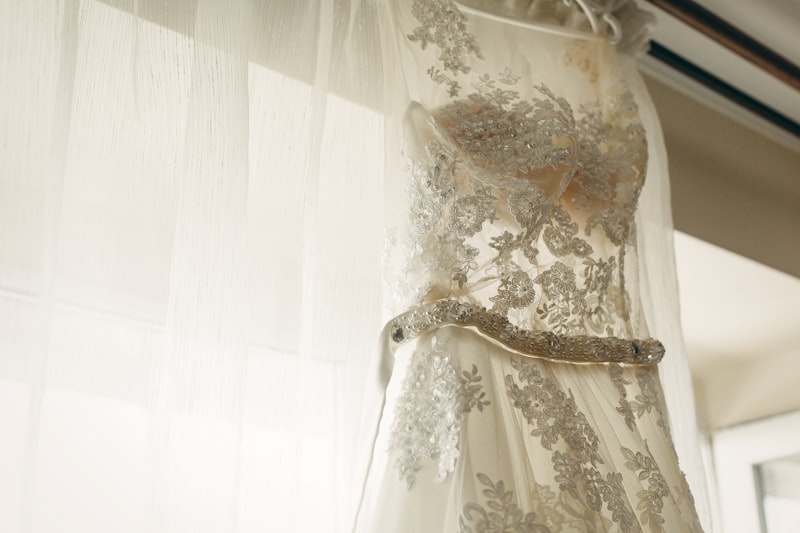Comparing Traditional Versus Modern Bridal Design Approaches: A Comprehensive Guide
Comparing Traditional Versus Modern Bridal Design Approaches: A Comprehensive Guide
Introduction
Weddings are a time-honored tradition, and bridal design plays a pivotal role in setting the tone for this special day. As we dive into comparing traditional versus modern bridal design approaches, we will explore their key features, advantages, and how they reflect the cultural shifts in society. This guide will provide you with insights that may help brides-to-be make informed decisions about their bridal style.
Understanding Traditional Bridal Design
Traditional bridal design is steeped in history and often includes elements that have been passed down through generations. The traditional wedding dress typically features intricate lace, delicate embroidery, and may include elements that hold cultural significance. For instance, in many Western cultures, white dresses symbolize purity, particularly since Queen Victoria popularized this color in the 19th century.
Key Features of Traditional Bridal Design
| Elements | Description |
| Color | Primarily white or ivory, symbolizing purity and innocence. |
| Silhouette | A-line or ball gown shapes that emphasize a classic look. |
| Material | Heavy fabrics like satin, tulle, and lace. |
| Details | Intricate beading, embroidery, and layered designs. |
The Shift Towards Modern Bridal Design
As societal values evolve, so do the approaches to bridal design. Modern bridal design embraces individual expression and authenticity, often resulting in bolder styles and a departure from conventional aesthetics. Today's brides often seek designs that reflect their personal tastes and lifestyles rather than adhering strictly to tradition.
Key Features of Modern Bridal Design
| Elements | Description |
| Color | Non-traditional colors like blush, navy, or even black. |
| Silhouette | Fitted styles, including mermaid or sheath dresses, emphasizing body shape. |
| Material | Lighter fabrics like chiffon, silk, and organza. |
| Details | Minimalist details, cut-outs, and bold statements through accessories. |

Comparing Traditional and Modern Bridal Designs
When comparing traditional versus modern bridal design approaches, several aspects must be taken into account.
1. Cultural Significance
Traditional designs often reflect cultural heritage and customs. For example, in certain Asian cultures, red dresses are worn for good luck, while in Western ceremonies, a white gown is predominant. Modern designs, however, often prioritize personal preference, leading to varied representations of what it means to be a bride.
2. Personal Expression
While traditional designs may sometimes limit personal expression to certain elements, modern bridal designs empower brides to embrace their individuality. Whether it's through color choices, unique fabrics, or unconventional accessories, modern brides are eager to showcase who they are.
3. The Role of Fashion Trends
Fashion is ever-changing, and bridal wear is no exception. Traditional styles may lean towards timelessness, but modern bridal fashion is constantly evolving, influenced by high-fashion runway shows and celebrity weddings. Trends such as off-the-shoulder necklines or high-low hemlines exemplify this shift.
Factors Influencing Bridal Design Choices
Several factors influence brides in choosing between traditional and modern bridal designs:
1. Personal Style and Preferences
The bride's personal style is paramount. Brides should consider what makes them feel beautiful and confident, whether that’s a classic silhouette or a contemporary style with a twist.
2. Venue and Wedding Theme
The venue plays a significant role in bridal design choices. A beach wedding may call for lightweight, flowing materials, while a traditional church wedding may be suited to a more traditional gown.
3. Budget Constraints
Bridal design can vary significantly in cost. Traditional gowns can sometimes be more expensive due to their intricate detailing, while modern designs may offer a range of affordable options. Brides should establish a budget that reflects their priorities.
4. Influences from Social Media
Platforms like Instagram and Pinterest have drastically changed how brides plan their weddings. The visual nature of these platforms encourages brides to explore modern designs that they might not have considered before.
Tips for a Successful Bridal Design Experience
To ensure a smooth and enjoyable bridal design experience, here are some tips:
1. Research
Take the time to research various styles, designers, and current trends, both traditional and modern. Use social media, bridal magazines, and wedding blogs for inspiration.
2. Determine Your Budget
Establish a realistic budget early on. Factor in not only the dress but also alterations, accessories, and related expenses.
3. Visit Multiple Boutiques
Don’t settle for the first dress you try on. Visiting various boutiques and designers allows you to explore a wider array of options.
4. Consider Comfort
Remember that you will be wearing your dress for several hours, if not the entire day. Comfort is essential, so test the dress thoroughly before making a purchase.
5. Stay True to Yourself
Ultimately, choose a design that resonates with you. Ignore outside pressures and focus on what makes you feel beautiful and confident.
Conclusion
In conclusion, the debate of comparing traditional versus modern bridal design approaches is not simply about what looks good but also about what feels right. Both styles offer unique advantages and appeal to different brides for various reasons.
As you embark on this exciting journey, consider how each approach aligns with your personal style, cultural background, and wedding theme. Make informed decisions, prioritize comfort, and don’t hesitate to infuse your personality into your bridal design. After all, your wedding day should reflect who you are and celebrate love in all its forms.
Remember, whether you lean towards traditional elegance or modern chic, the key is to feel empowered and beautiful on your special day. Happy planning!
